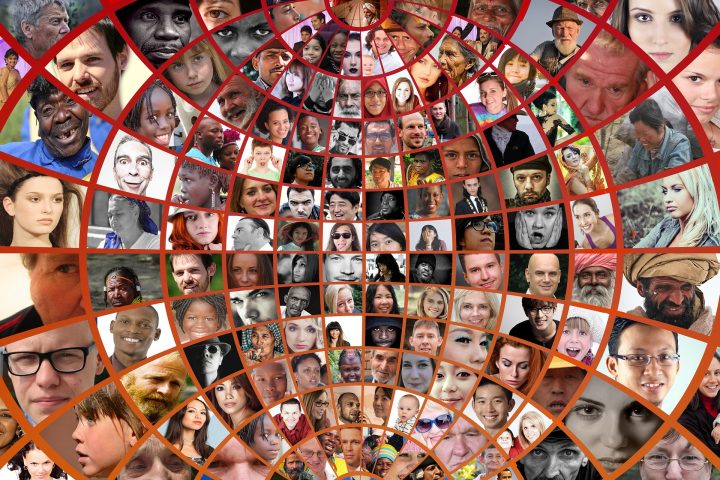
In her recent participation in the “Peace Building” round table organised by the Ministry of Foreign Relations and Human Mobility in Ecuador, Nelsy Lizarazo, President of the international news agency Pressenza, said, “The hallmark of Ecuador’s diplomacy is based on how it has developed and advanced towards the diplomacy of active nonviolence.”
The following article outlines this concept in greater detail.
Diplomacy is a relationship tool, a means of forging relationships with other nations. It is therefore necessary to firstly determine the type of relationship that is desired.
A policy of nonviolence doesn’t just propose taking the other party into consideration, it goes further by putting yourself in their position. Trying to treat the other party as you would want to be treated. In other words, promoting relationships of empathy, not just polite and tolerant ones. From an ethical viewpoint, it’s the complete rejection of any kind of violence, be it physical, economic, racial, cultural, psychological, moral or religious to name but a few.
This rejection of violence is based on its origins. So, where does the violence come from? It’s the refusal to acknowledge the humanity in one another. So, no empathetic relationship can come from violence.
Likewise, on an international scale, violence means the denial of the other party, their alienation for personal gains, subjugating them and ensuring their dependence, exploiting them, removing their self-determination. There are ample historical examples of this, so we don’t need to go into further detail.
Active Nonviolence is the attitude that comes from empathy. When you can feel solidarity with the pain and suffering of others, removing the causes of this suffering becomes a priority. For this reason, Active Nonviolence drives us to surpass it and to not collaborate with any form of violence, to denounce and boycott it. Ultimately, to dismantle bodies which enable violence and, at the same time, create situations where violence cannot reappear easily.
Internationally speaking, this translates to clearly expressing the discrepancies between social and personal rights both stated and practised, between and within nations themselves. It is also about acting decisively to find a way of reducing this gap which is usually expressed as hypocrisy in multilateral ambits.
Principles, Position and Programme
To achieve harmonious relations between nations whose past and future are more than likely different, a starting point is essential that has a universal middle line and a principle that is unyielding and recognisable as a shared truth.
Such a principle could be nothing other than our common humanity. A human relationship cannot be considered valid if it does not take into consideration the common ground with the other party’s humanity.
From this general principle, come others (or secondary principles) such as the right to Diversity, Equality, Solidarity, Commons, Self-determination, Participatory Democracy and others of the same ilk.
In the international sphere, the current level of interrelations and interdependence in this moment of humanity’s process means recognising the need for these secondary principles as essential for guaranteeing collective co-existence.
Critics will say that this position is utopian, misplaced or “a-chronical”, i.e. not of this, or any other era.
Without a doubt this is an ethical position and not merely an aesthetic one – which, based on formalities, is just another form of hypocrisy; common currency in today’s intra- and international relations.
This ethical position can also be seen as an alternative to the “cosmetic position”, which tries to ignore the structural factors at the root of conflicts, delaying resolutions in the process.
Of course, this ethical position needs to be put into practice in order to not remain theoretical.
The radicalism of ethical terms should not be understood as immediate, unhealthy greed, but rather as a vision of a process with certain goals in precise dialectic form, as opposed to a static vision conditioned by past situations.
This dialectic will enable human choice when faced with the determinism or pragmatism of the situation. Are the different changes that the policy proposes more or less straightforward?
Just as whether humanity decides to put an end to tax havens, exclusion, illiteracy, unequal opportunities, unhealthiness, exploitation, damage to the environment, the arms industry or discrimination – something that certainly won’t happen without setbacks and mistakes – so personal, social and group violence also needs to be surpassed. The above is nothing more than a list of ways in which violence presents itself. But, far from being a distant goal, we believe that the overcoming of violence is in progress in certain areas. And has been one of the main drivers of History for a long time.
Peace is not the same as Nonviolence
In order to create a programme which proposes precise images of these principles and postulates, one more distinction needs to be made:
The goal of pacifism is to end wars. To achieve a state where belligerence and armed conflicts do not exist. Active Nonviolence also has this as a goal, but considers the possibility of ending all types of violence. What is more, it explains that, without this, peace will not be possible.
Points for a diplomacy of active nonviolence
On the surface, all measures that stop direct and brutal violence, the elimination of human life and wars should be considered.
War is neither good nor justifiable. There can be no endorsement for armed conflict. Thus, providing weapons of any kind cannot be justified, above all because the arms race leads to such a high number of fatalities that it poses a direct threat to the survival of our entire species, regardless of nationality or ideology. It is essential to stop this madness.
Thus, complete nuclear disarmament, progressive multilateral conventional disarmament, the establishment of peace zones, the constitutionalisation of the principle of not participating in armed conflicts, non-aggression pacts between countries and promoting conflict resolution through dialogue, are inherent in this programme.
To consolidate and carry out this first step of peace towards Nonviolence, it’s necessary to start with profound reconciliation programmes. This reconciliation isn’t just the most basic aspect of regaining a certain civility between previously warring sides, but aims for higher reconciliation by promoting the idea of ending all types of revenge, implicit or explicit, within human collectives.
Secondly, nonviolent diplomacy means describing precisely the structures which lead to other forms of social violence. Such structures are related primarily to the process of concentration of power which restricts the free will of people and groups. This can be seen not only on an international level, but also inside every society, even in interpersonal relationships.
Thus, any diplomatic programme needs to focus on de-concentration. In this way, globalisation – badly understood as the appropriation of global space by a handful of businesses – should make way for planetarisation – a planetary intercultural moment of contact (or the first planetary civilisation), with space for everyone’s contribution in solidarity and the subsequent democratisation and expansion of opportunities for international dialogue, without guardians or bosses.
At the same time, with persistent inequality in mind, measures to effectively redistribute wealth and technologyneed to be implemented. Such redistribution can be justified on its own, not only for moral reasons, present and future, but as an attempt at sincere reconciliation and to repair the horrors committed during previous colonisations.
“No human being above any other and no nation below any other” is the premise on which this programme is built.
Regarding global institutions, every State’s foreign policy must be recognised as the expression of its ruling faction, a temporary situation which doesn’t always exactly represent the interests of the majority. This representation becomes more serious if it is recognised that it is barely legitimized today through democratic forms experiencing increasing difficulties. Thus, it must not be forgotten that governments and their States, today first-rate actors in international relations, are always mediations between peoples and are in no way a representation of social life itself.
In this way, the starting point of any programme to humanise diplomacy is to put popular participation as a main priority, creating bodies and new models both within state organisation and in the system of international alliances. What is left of plutocracy, covered-up today by technocracy and bureaucracy which continue to function within global governance, must be allowed to perish.
Moreover, genuine participation of the population, above all public representation, creates a counterweight to these “multilateral actors” or “civil society”; a euphemism for corporate interference in projects of global or multilateral scope.
The life of groups improves when their self-regulation, the awareness of their possibilities and their autonomy improves. Numerous, politically-creative phenomena can arise from this improved autonomy. Uniformity and uni-polarity both go against this multiplicative phenomenon. Cultural, commercial and religious monopolisation go against the free right to choose our own development. These are extended forms of violence.
This is why the development of a nonviolent diplomacy acts in defence of sovereign decision-making, of the unequivocal free determination of nations.
In this way, Active Nonviolence recognises the imperative need for interconnected international cooperativesbased on complementarity and solidarity. In this area, there are countries which show clear signs of this effort, and not only in times of disaster, going beyond their borders with campaigns that benefit the populations of other nations directly and unequivocally.
The same type of relationships based on cooperation and self-determination can be seen inside some regional integration bodies (such as ALBA, CELAC, UNASUR in Latin America) and others with multilateral characteristics, associative signs which create social and economic achievements, in addition to creating awareness and brotherhood.
The majority of nations are in no doubt about the need for a turnaround in current international relations. For us it is time to formalise the advances as part of a concept which illuminates the path and above all, implement it in a decisive manner.
Article written in collaboration with Nelsy Lizarazo.



Leave A Comment